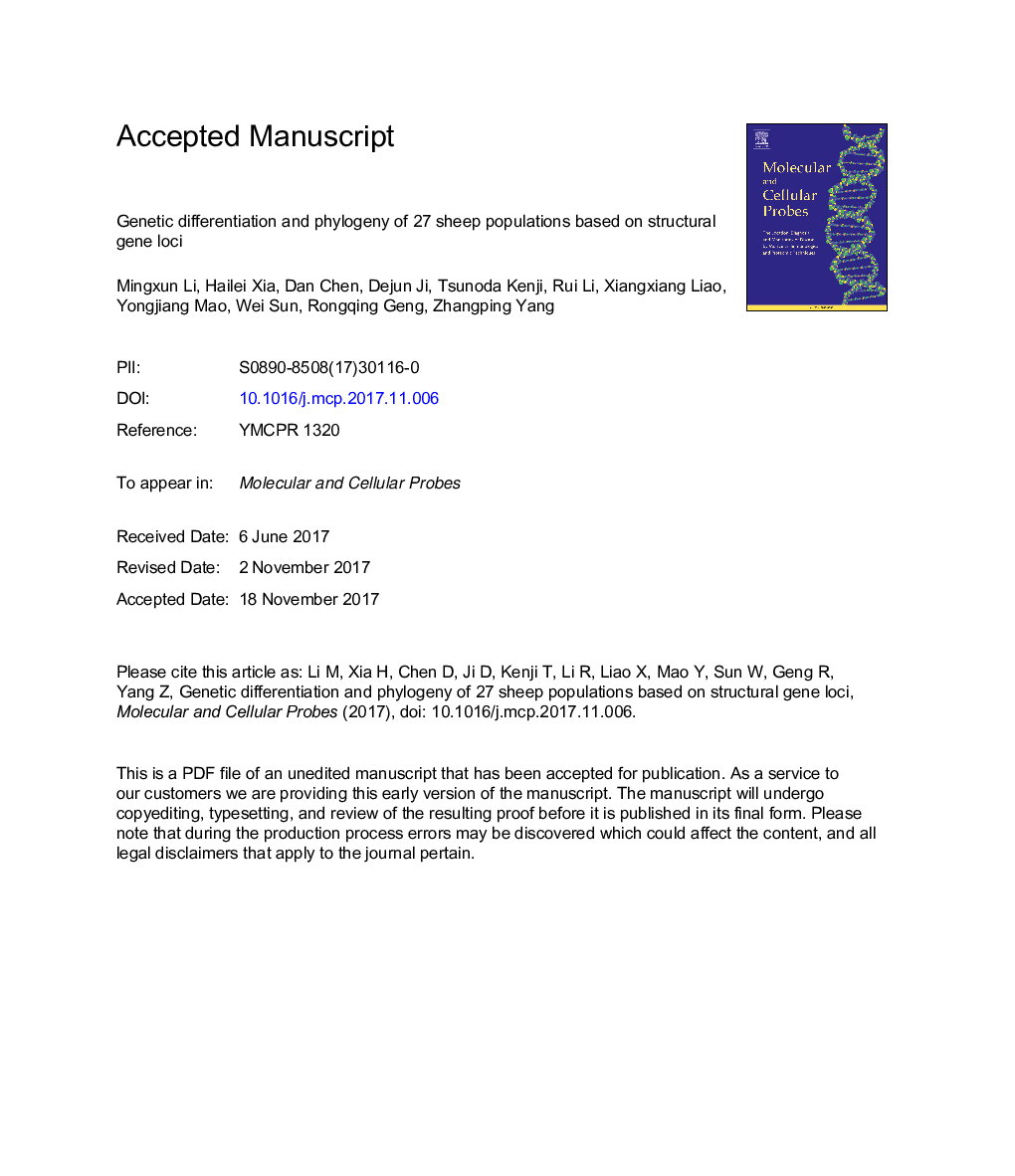| Article ID | Journal | Published Year | Pages | File Type |
|---|---|---|---|---|
| 8478758 | Molecular and Cellular Probes | 2018 | 18 Pages |
Abstract
To explore the genetic divergence and phylogeny of Chinese indigenous sheep breeds, in the current study, we analyzed the polymorphisms of 5 structural loci in ten sheep populations, including Sishui Fur, Sunite, Wurank, Bayinbuluke, Altay, Small-Tailed Han, Wadi, Tan, Tong and Hu sheep. The data were then compared with those from an additional 13 Asian and 4 European sheep populations acquired by the same experimental method. Based on the genetic distance and the results of a cluster analysis, we constructed the phylogenetic relationship of 27 populations. The results showed that the sheep populations in this study could be classified into four genetic groups: “Mongolian”, “Tibetan”, “South-Southeast Asian” and “European” sheep groups. All 10 Chinese sheep breeds belonged to the “Mongolian sheep” lineage; however, Finnish Landrace sheep and Yunnan sheep could not be classified into any of the four groups. These results could provide a good reference for the protection and utilization of primary breed resources in China and phylogenic research on Asian sheep populations.
Related Topics
Life Sciences
Biochemistry, Genetics and Molecular Biology
Cell Biology
Authors
Mingxun Li, Hailei Xia, Dan Chen, Dejun Ji, Tsunoda Kenji, Rui Li, Xiangxiang Liao, Yongjiang Mao, Wei Sun, Rongqing Geng, Zhangping Yang,
